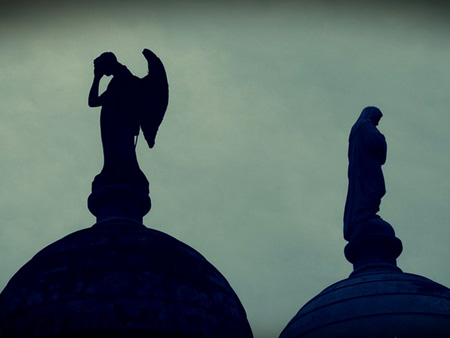
Documenting Recoleta Cemetery in Buenos Aires since 2007

After filming for Globe Trekker on a hot & steamy February afternoon earlier this year, producers couldn’t give me a firm estimate about the release date. I guessed October… just about right. The Buenos Aires city guide episode aired in Europe at the end of October & at the beginning of November in the US.
I liked that the segment focused on important figures other than Eva Perón. Obviously her life (& death) story draw many people to the cemetery. But after years of documenting & guiding there, it’s refreshing that Roca could share a little of the spotlight along with Firpo & Rufina. And that’s my patented Rufina casket lid slide move. No copying!
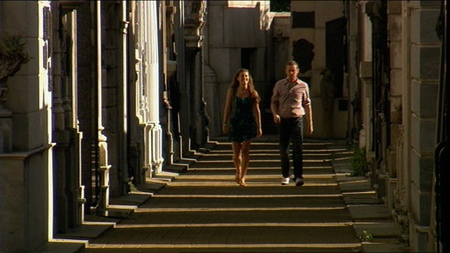
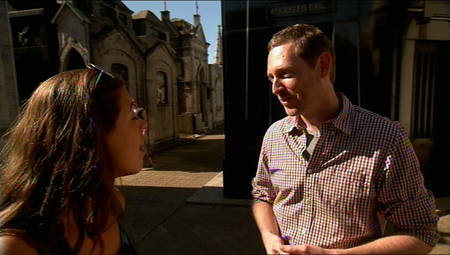
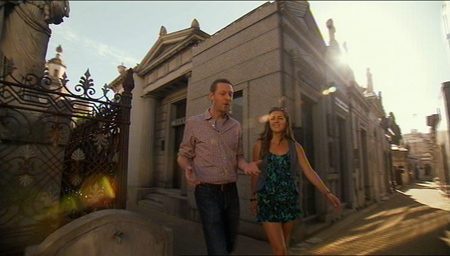
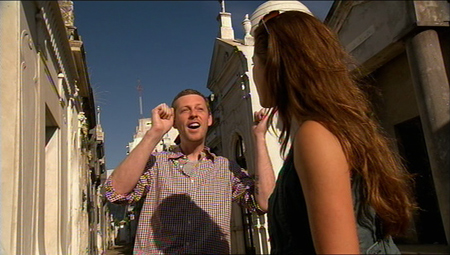
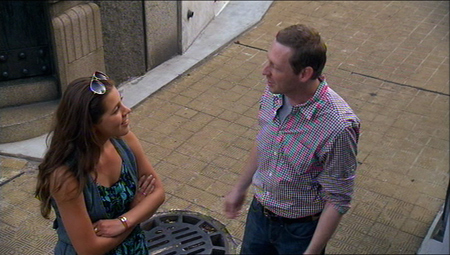
Look for the episode on your local PBS station or online!
5 Comments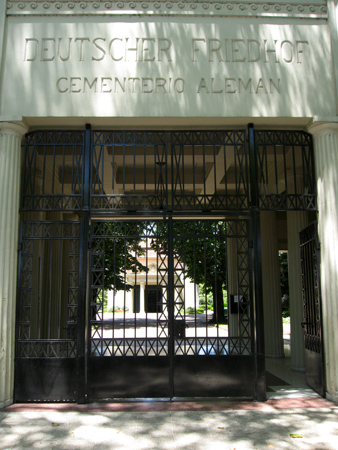
The Cementerio Alemán opened along with its neighbor, the British Cemetery, in 1892. German Protestants had the same difficulty as other non-Catholic immigrant groups in finding a suitable place for burials. Hungarian architect Juan Kronfuss designed the entrance in 1926, & the chapel contains extraordinary stained glass windows from Franz Mayer in Munich. The greenery & perfectly manicured plots make for a nice break from the hectic vibe of Chacarita.
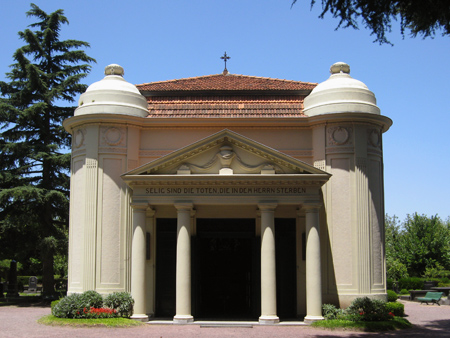
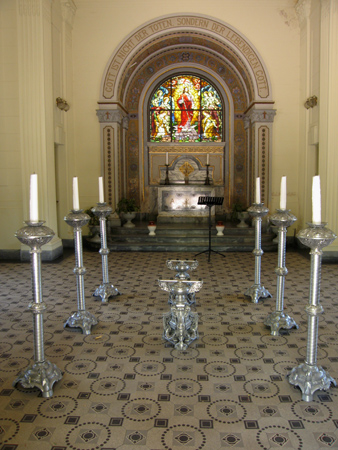
One of its most famous graves belongs to Capt. Hans Wilhelm Langsdorff, commander of the armored vessel Admiral Graf Spee. Damaged in the 1939 Battle of the River Plate off the coast of Montevideo, Langsdorff scuttled the ship & his crew were taken prisoner. Transferred to Buenos Aires, Langsdorff committed suicide two days later. Some of the crew passed away—waiting out the end of the war in either Argentina or Uruguay—& are also buried here.
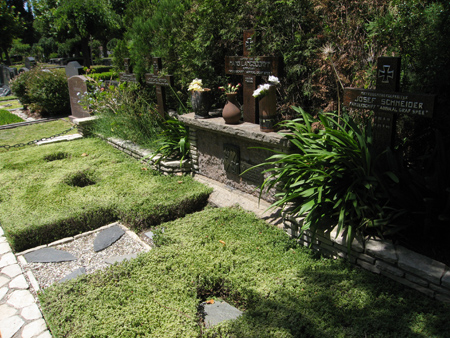
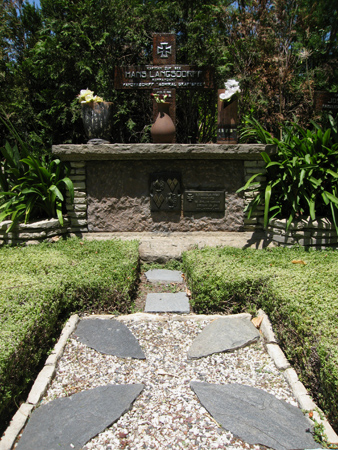
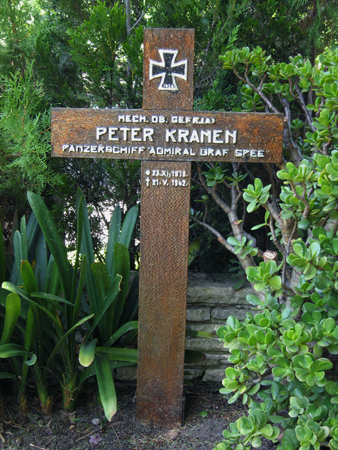
The crew of the Graf Spee are not the only Nazis interred there. Rodolfo Freude formed part of Perón’s secret service & is thought to have been one of the organizers behind ODESSA. He died in 2003, & the full story of bringing Nazis & Nazi wealth into Argentina may have died with him.
Other notable figures: Swimmer Jeanette Campbell was the first Argentine to win an Olympic medal… ironically at the 1936 Berlin games. Photographer Annemarie Heinrich took some of the most well-known portraits of celebrities & politicians, including my favorite images of Tita Merello & Eva Perón:
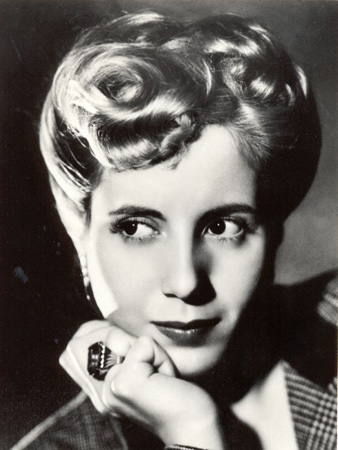
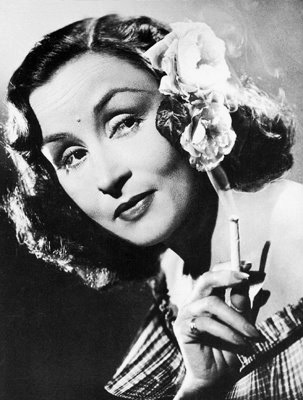
Architect Carlos (Karl) Nordmann designed the Legislature of the city of La Plata, along with its museum & other fine works throughout the country.
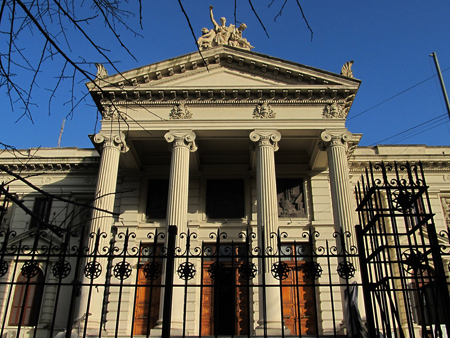
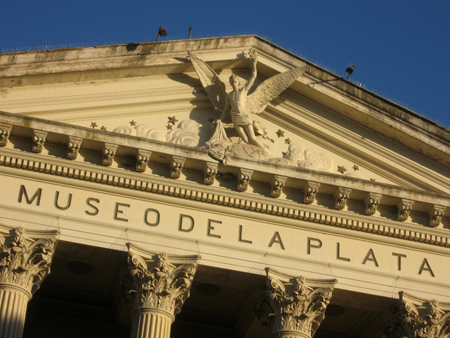
Alexander Asboth, a Hungarian immigrant to the USA, commanded Union troops during the Civil War. He later became US ambassador to Argentina & Uruguay, dying in Buenos Aires. Asboth was initially buried in the Cementerio Alemán, but his remains were transferred to Arlington National Cemetery in 1990. The original tombstone can be found by the entrance:
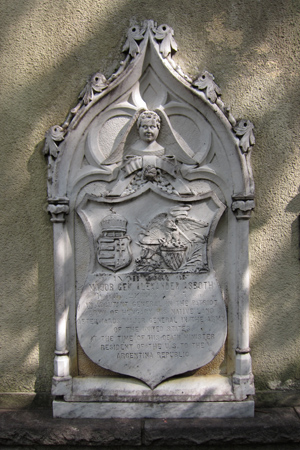
A few other pics… there are some fantastic works of art, mostly near the entrance:
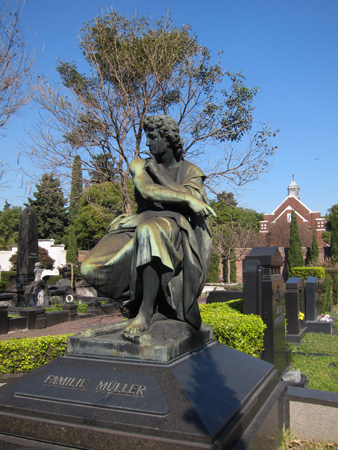
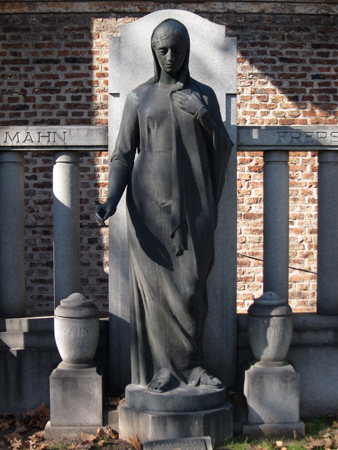
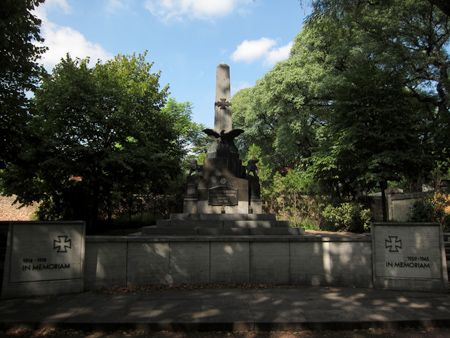
Although sharing the same gigantic plot of land as Chacarita Cemetery, walls separate the Cementerio Alemán from Chacarita. The only entrance is along Avenida El Cano, near the intersection of Avenida del Campo.
—————————————————
Other Buenos Aires cemeteries: Cementerio del Sur • Chacarita • San José de Flores • Cementerio de los Disidentes • Cementerio Británico • Cementerio Alemán
Photo of the Legislatura in La Plata by Marcelo Metayer.
Leave a Comment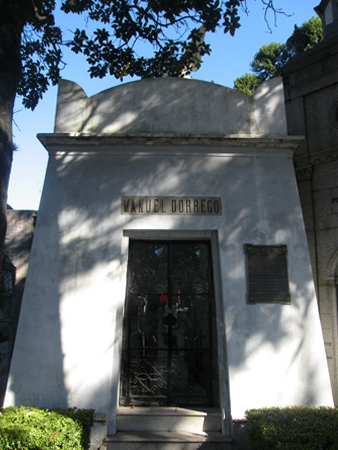
One of the main protagonists during the complicated birth of Argentina, Manuel Dorrego lived a life full of adventure, battles & exile with an unfortunate, untimely death.
Born in Buenos Aires in 1787, Manuel’s father was an immigrant Portuguese businessman. Dorrego’s early studies were at what’s known today as the Colegio Nacional (just off Plaza de Mayo), but when revolution began in 1810, he was studying law in Santiago de Chile. Dorrego quickly joined local forces & crossed the Andes four times bringing Chilean troops to fight the Spanish.
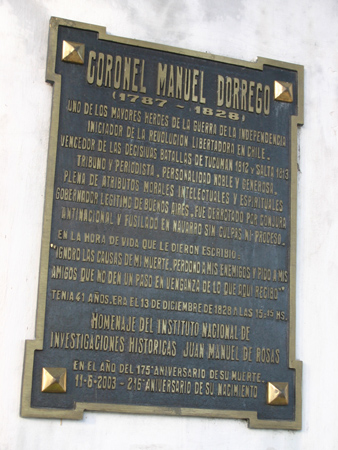
Dorrego’s actions got him noticed. Placed in the Ejército del Norte under the command of Manuel Belgrano, he eventually rose to the rank of Coronel & fought in the decisive battles of Tucumán & Salta. Dorrego’s bravery & skill was never questioned, but he was often insubordinate to commanding officers… both Belgrano & San Martín temporarily removed him from service.
As the conflict with Spain was being fought, another was brewing. Disagreements over the role of Buenos Aires in regional government brought Dorrego into conflict with Supreme Director Juan Martín de Pueyrredón. Arrested & sent to Santo Domingo, the ship’s crew went rogue during the voyage, Dorrego was released, & he made his way to Baltimore to meet with other Argentines forced into exile by Pueyrredón.
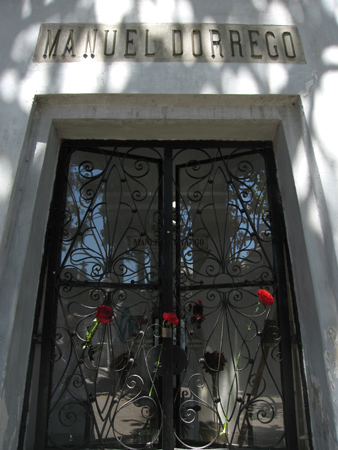
A change in government in 1820 allowed Dorrego to return, & his military rank was restored in order to fight again. Pushing for war against Brazil, the Federalist ideas of Dorrego allied him with Simón Bolívar. He was briefly appointed as Governor for Buenos Aires which brought him into another conflict of ideas with Martín Rodríguez & Bernardino Rivadavia. Dorrego often voiced his opinion in favor of male suffrage & economic assistance to the poor.
When the war with Brazil forced Rivadavia to resign, Dorrego became Governor of BA for the second time. He tried to annul an initial peace agreement signed under Rivadavia, continued to fight, but eventually—in part due to British economic & military pressure—was forced to accept peace. The price? Removal of all territory on the opposite bank of the Río de la Plata & the formation of Uruguay in 1828.
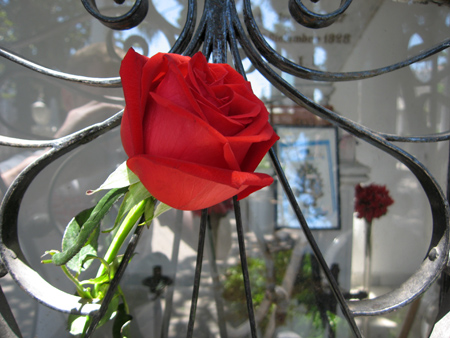
The loss of so much territory as well as conflicting political beliefs generated a conspiracy to remove Dorrego from power. Martín Rodríguez, Salvador del Carril, Juan Cruz Varela & many others convinced General Juan Lavalle to launch an attack against Buenos Aires. Forced to flee, Dorrego turned to Juan Manuel de Rosas who advised Dorrego to go north. Instead, Dorrego’s troops fought Lavalle & lost. Lavalle—who had fought with Dorrego in the early days of independence—ordered Dorrego’s execution by firing squad.
Dorrego’s sacrifice was supposed to bring an end to internal conflict but it only made matters worse. Once Rosas took control the following year, he had Dorrego’s remains moved to Recoleta Cemetery. Red flowers representing the Federalists are often found on his tomb, & an engraving shows what the early cemetery looked like at the time of his burial:
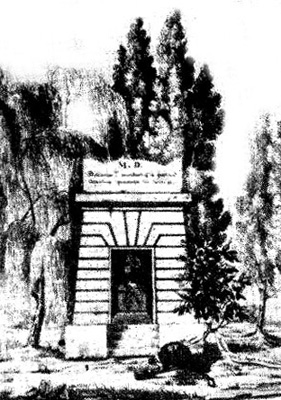
In a final letter to Estanislao López, Governor of Santa Fe, Dorrego wrote:
En este momento me intiman morir dentro de una hora. Ignoro la causa de mi muerte; pero de todos modos perdono a mis perseguidores. Cese usted por mi parte todo preparativo, y que mi muerte no sea causa de derramamiento de sangre.
In this moment I’ve been informed that I will die within the hour. I am unsure of the reason for my death; but in any case I forgive my prosecutors. Abandon any reciprocation, so that my death is not the cause of bloodshed.
This mausoleum became a National Historic Monument in 1946.
Leave a Comment